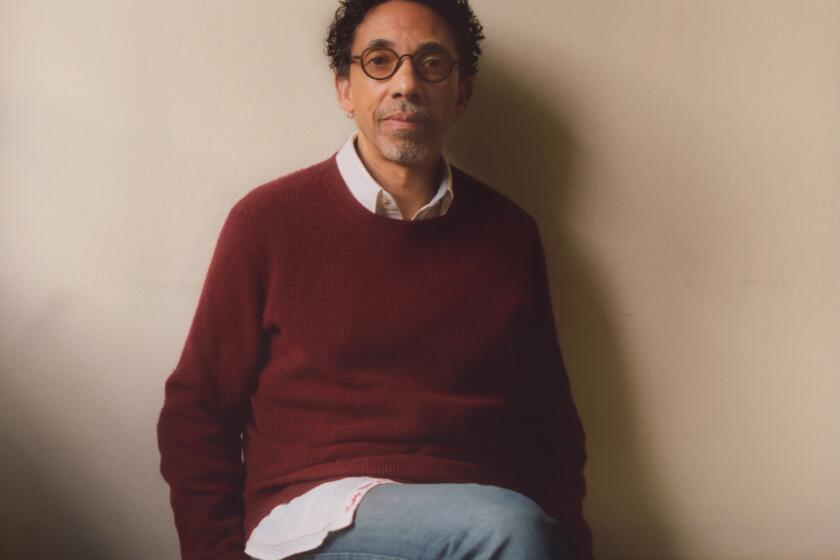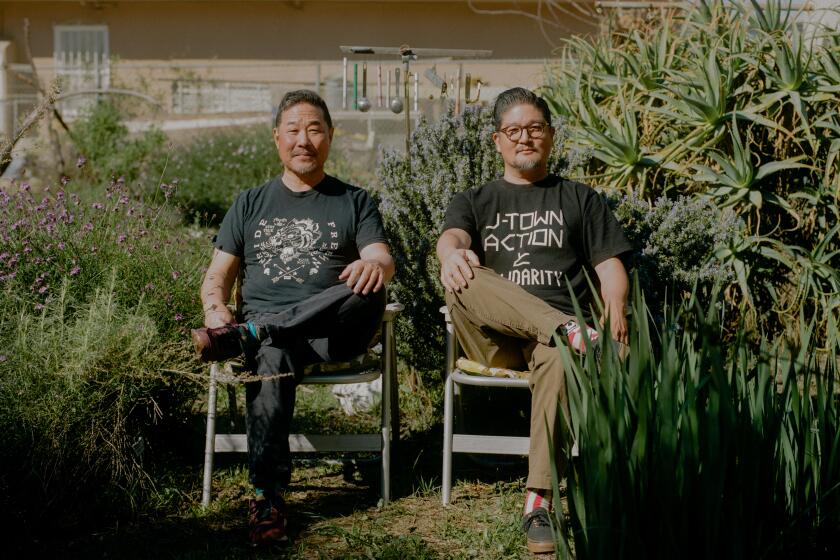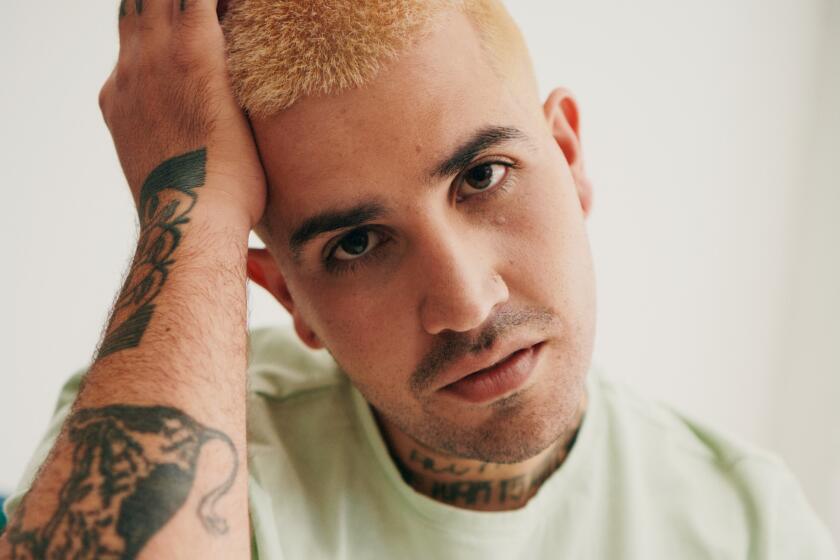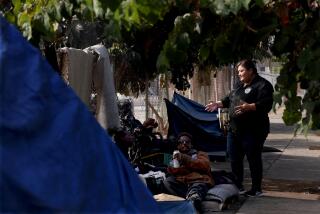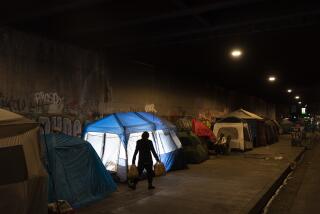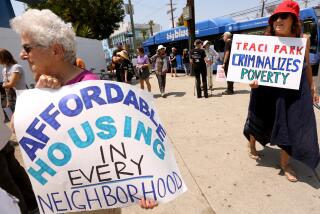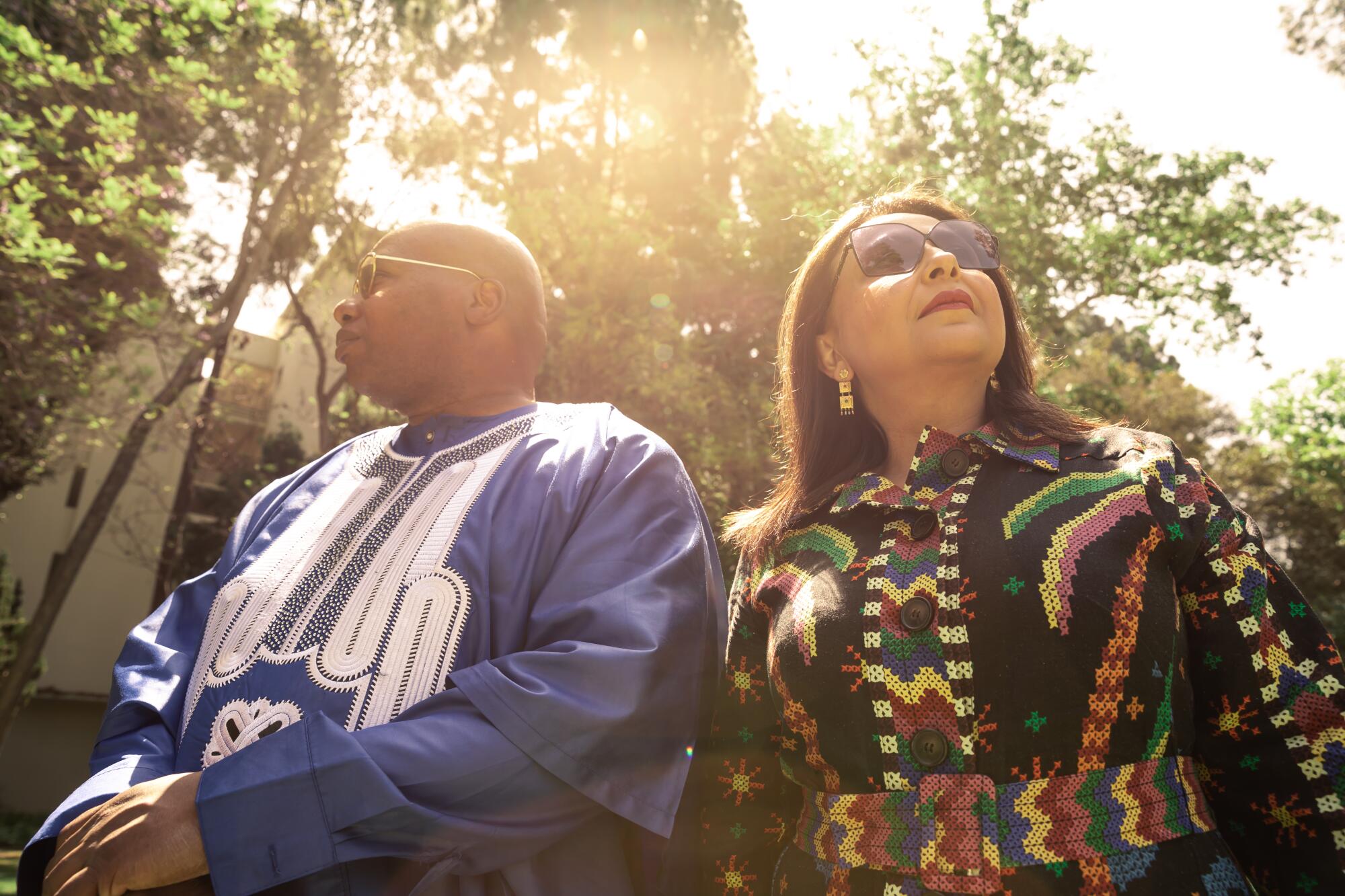
“It’s a war on the poor,” Theo Henderson often likes to note. And indeed, it is, in the liberal city of Los Angeles, where homelessness is the leading public issue of concern. While politicians expand the criminalization of homelessness and promise to “end encampments,” thousands of Angelenos are consigned to living and dying on the streets, and thousands more are on the edge of eviction. Rarely, though, do unhoused voices and experiences shape the city’s public discourse and policies about homelessness. Dehumanized and banished, the unhoused have come to be seen as a problem to be eradicated.
This conversation — held at the UCLA Luskin Institute on Inequality and Democracy, where Ananya Roy is founding director, and Theo is currently Activist-in-Residence — foregrounds the endeavors and collaborations that seek to challenge such erasure. It builds on Theo’s work as founder of “We the Unhoused,” a podcast that has produced a radical shift in how Angelenos think about homelessness; and the work of the institute, including programs that are meant to turn the university inside out, by bringing movement-based scholars and unhoused public intellectuals to the classroom. As Theo highlights in this interview, there is a growing web of solidarity afoot in L.A., one that refuses the divides that otherwise structure life in this unequal city. — Ananya Roy and Theo Henderson
Ananya Roy: I’m so delighted to be able to do this with you. Why don’t we start with how “We the Unhoused” got started?
Robin D.G. Kelley and Vinson Cunningham on L.A. solidarity and the Black Radical Tradition.
Theo Henderson: It begins, literally, with me being displaced to a park. Like many other unhoused people, I am college-educated. I was employed as an instructor. I got ill, and I did not have the safety net — or financial or family support — to see me through recovery from severe illness. As you know, the rents here, the medical care here, are ridiculously expensive. I had to make some decisions that eventually got me into the park. Being an unhoused person, you don’t just set a tent out and say, “This will be my home.” It is a slow descent. My descent started off being evicted from my apartment. [I had] friends do couch commitments until neighbors complained to the landlord. Then I jumped to hotels, then squatting in buildings, then sleeping in a car.
I had close friends — some of them are NIMBYs [Not in My Back Yard] — that [saw] my situation as a personal failing. When I would try to educate them, they tried to give me solutions that I [had] already explored. It got increasingly exhausting. Then I was targeted by the NIMBYs in the community that didn’t like my presence and my connections in the community. So, I basically started to find a way to fight back. I wanted to create a voice that was a bit different from a housed perspective. I work very hard to get the unhoused perspective over the housed perspective.
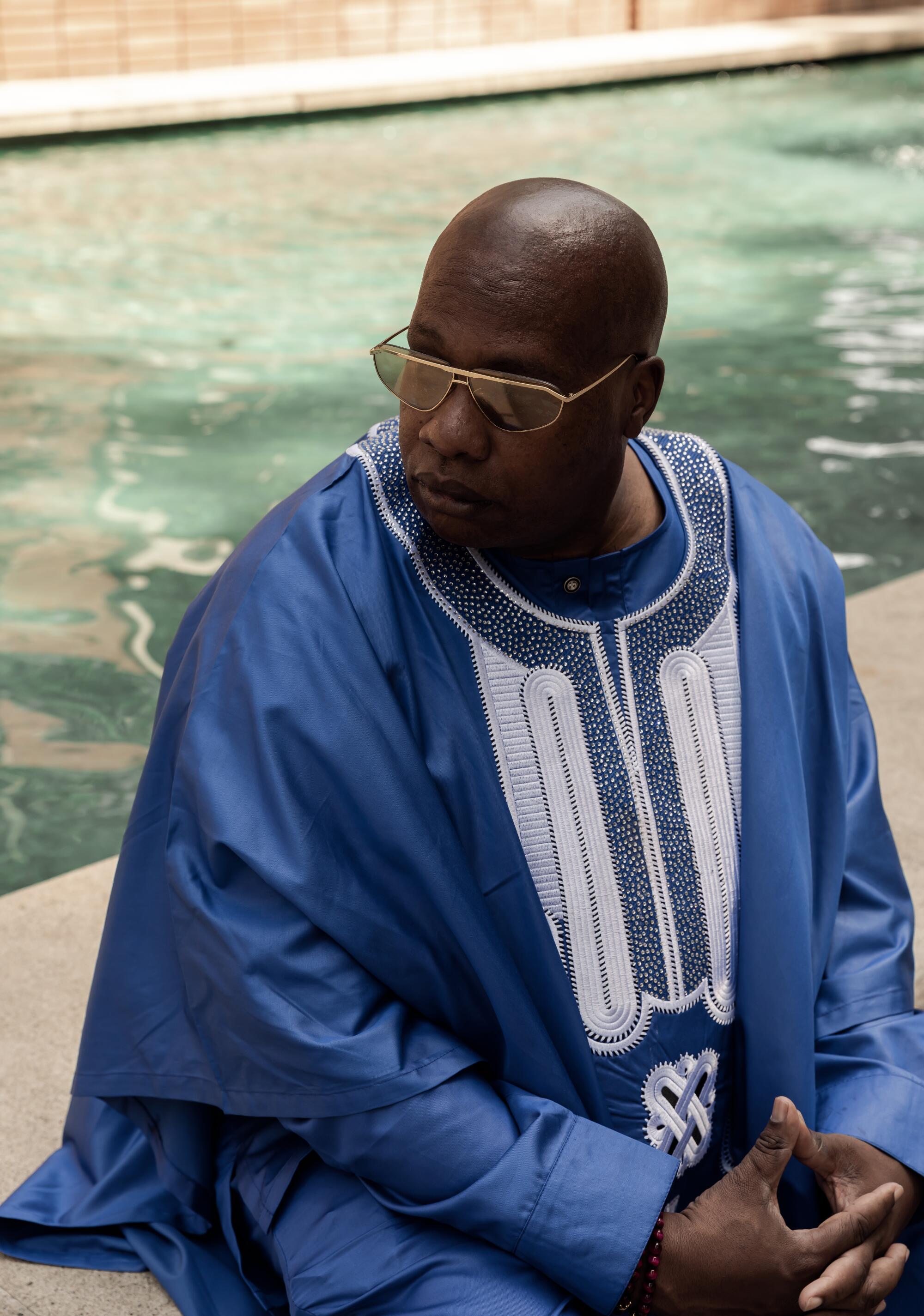
AR: When you were teaching full-time, what were you teaching? Tell us a little bit about what it meant for you to be in the classroom.
TH: My focus was English, creative writing; but I also was multisubject because if a teacher called in sick or something, I was what they would call the “rover” teacher. I was a substitute teacher for science, math, geography, whatever. But my focus was English literature as well as creative writing.
AR: What was your college major?
TH: English — and it was education. I had to train to be a teacher [at Aquinas College in Michigan].
AR: This is making me smile, because my mom — she’s retired now — she was an English teacher. What made you want to become a teacher?
TH: Weirdly enough, I always knew I was going to be a teacher because of the teachers I had. I always had a knack for helping my peers around me. I helped my sister who is a math teacher in science, even though I hated math. I always, deep down, knew I wanted to try to get away from it, because the pay sucked. But I always knew I was going to be a teacher.
AR: Tell us a little bit about growing up. What, for you, was a sense of home? Because this question of what home is, of what it means to have a home, even if one is unhoused — all of that matters so much to you. What are your memories of home and what felt like home to you?
TH: My family is from the South, and [we] were part of the Great Migration. What people miss about the Great Migration is the terrorism that went on with Black Southern sharecroppers and very low-income families. I come from that environment and that perspective. In the Midwest — I moved to L.A. 15 years ago — there was the latchkey movement I grew up in. Your parents worked themselves almost to the bone. And you basically raised yourself on after-school specials and instruction. The teachers that I grew up with went to the same church my parents did, so I could not be a troublemaker, though I did have my moments.
Devon Tsuno interviews Alan Nakagawa about forgotten stories of Japanese people in Mid City.
AR: Let’s return a little bit to that park. Once you have done the hotels, you’ve done the couch-surfing and you’re out of options, you are in the park. You have talked before about the various kinds of violence you faced. Let’s break that down a little bit.
TH: There is no school that can educate you on the realities of unhoused people. There’s a mindset with housed people who believe they’ve worked hard to pay their taxes and deserve the amenities that the city offers. Anyone that does not fit in is looked at through a sinister lens — you must be either drug-addicted or mentally ill or you’re preying on the elderly or on the children. It was not uncommon for NIMBYs to walk up and take pictures, and then craft their own narrative. I remember one gentleman — and I never met the man — he started turning on the phone and yelling and screaming at me. Mind you, there were multiple people around that were housed and exercising and dancing to music and things like that. But he zeroed in on me, and then he tried to get me to create an incident that he could call the police to have me arrested. That became an organized effort by LAPD, some of the NIMBY people with kids, as well as Parks and Recreation.
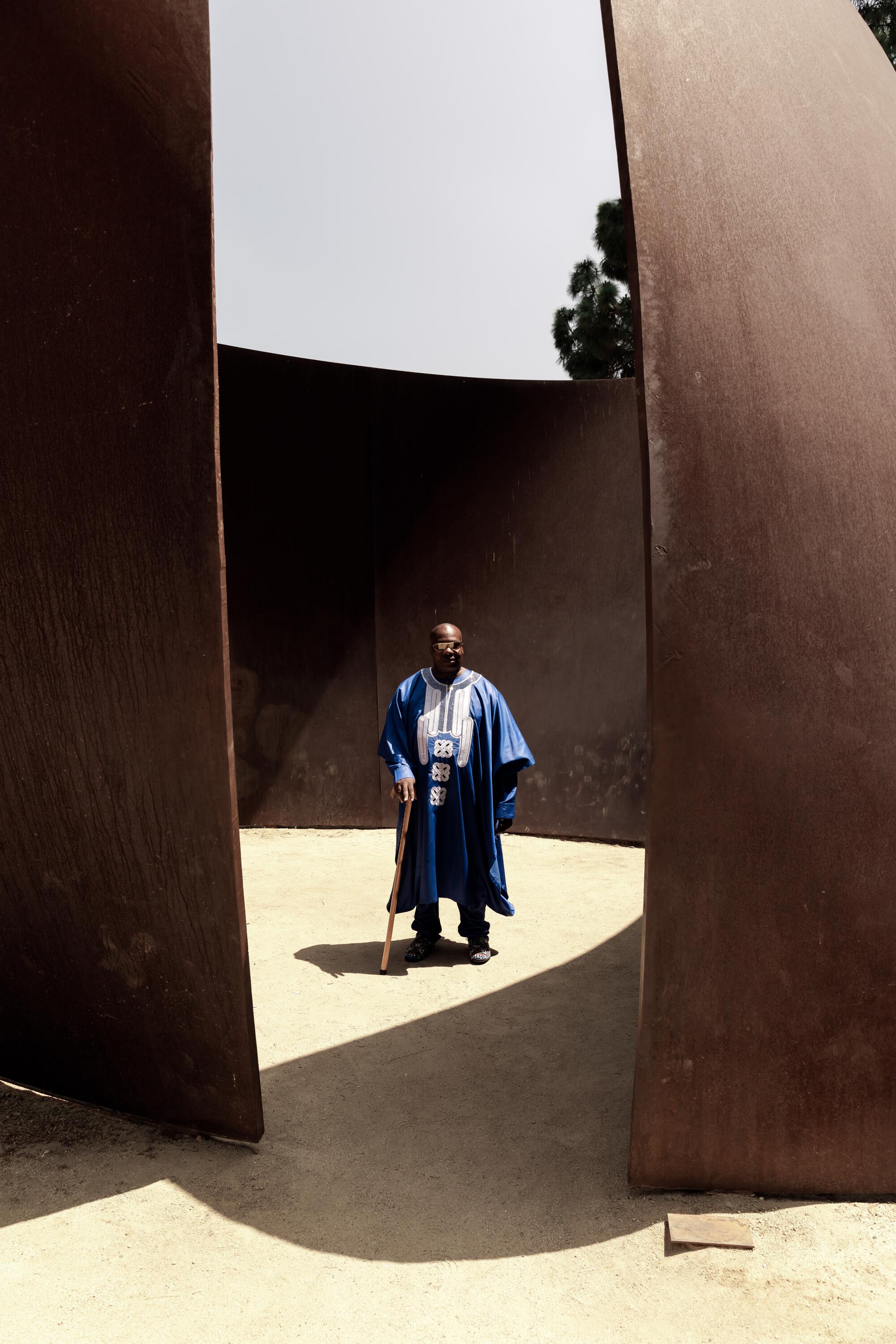
Now, I also want to say that there were community members that came to my defense. There was a wonderful, elderly population there that fed me constantly, looked after me and allowed me to do errands for them or tutor their child. That was a very unique situation that I must point out, because if you look at it, here’s an unhoused guy being able to watch their children. That was almost unheard of. It really showed the respect and trust that they had.
AR: You use the term “organized effort” — I think that’s an important point. It wasn’t just individual NIMBYs; it was that there was an organized effort with Parks and Rec, with police. A targeted, focused campaign.
TH: All it takes is a NIMBY parent. It doesn’t always have to be an enemy parent, let me be clear; it has to be someone that doesn’t like unhoused people, and they pretend that they care about unhoused people. I want to compare it to some whites who believe Blacks shouldn’t be in a certain place. You know, it’s “Think of the poor defenseless children.” Now, there are unhoused people that traipse this whole community. And they are not out harming children. But the idea is that they can’t be near parks, they can’t be near schools. [People who believe this] think that all unhoused people are going to snatch poor children, or they don’t want their kids to see poverty. The reality of it is, is that in that park were friends of mine that were unhoused, and their children were there too.
AR: In the wake of Echo Park Lake displacement we heard this discourse repeatedly, that working-class families were unable to use the park, their children don’t have access to green space in crowded neighborhoods, as if the presence of the unhoused community there somehow impeded anyone from using the park. How do you counter that kind of discourse?
TH: The limited space is not due to unhoused encroachment. It’s due to your city leaders cutting off spaces and allowing developers to overtake places. There are not enough community rec centers that are inclusive of everybody, and most are only for a certain financial group of people. So you get choice services but an unhoused family that needs to utilize those services cannot because, you know, [they’re] not part of the in-crowd.
There is no school that can educate you on the realities of unhoused people.
— Theo Henderson
AR: Let’s talk a little bit about [Section 41.18 of the Los Angeles Municipal Code] but also more broadly, the sweeps. Because you’ve said many times that to be unhoused in L.A. is as if you have no place to be. This is also related to the fact that you don’t have access to the basic amenities that human beings need, like bathrooms. There are thousands and thousands of unhoused people, and yet they don’t have a place to be.
TH: The most skilled travel agent doesn’t stand a chance with unhoused people. Unhoused people have to plot their day-to-day existence to the minutiae. They have to make sure where their belongings are. They have to navigate public transportation, if they don’t have an automobile. They have to time themselves to be at places. To be able to survive in this kind of environment requires a presence of mind. You’re always weighing the risk.
AR: Almost all of our mayoral candidates are talking about ending encampments. When they say that, what does that mean to you?
TH: It’s a fool’s errand because the unhoused community is exploding. There are no places to go. Except prisons. And prisons are already overcrowded. [The unhoused are] going to be shunted around into different places — it’s going to be like Whac-a-Mole — instead of just saying, let’s pause, let’s not keep displacing people, let us create supportive services. We need to put that aggressive money together to make sure these systems work, so we won’t have this freefall that we have right now.
Black Lives Matter L.A. leader Melina Abdullah discusses her parenting approach and efforts to challenge the status quo.
AR: As you noted, it’s really about policing people and moving — displacing — them. Why don’t we break down what a sweep is, because what activists call a sweep the city calls a cleanup. What happens to people when they experience a sweep?
TH: I think it’s important to understand the distinction. As an English teacher, allow me a moment to speak on this. In my class, I used to talk about shades of meaning. When people say “cleanups,” when people say “Project Roomkey,” when people say “tiny homes,” when people say “tiny home villages” — I have to say, stop saying that because you don’t understand the images that you’re conjuring.
Cleanups denote that a group of concerned people [are] coming together for the community, cleaning up and enlisting services — and [the unhoused] don’t want the services; they are service-resistant; they don’t want to comply. So the person that’s not holding up their end of the deal is this person that’s on the street — he just wants to be out there free and living in a McMansion and doing all these nefarious activities, having wild parties.
But what really happens is a sweep. You’re awoken at 6 o’clock in the morning or earlier with loud sounds and disruption just to rattle you psychologically. After looking at the note, you have sometimes 10 minutes to take all your stuff, no matter if you’re healthy or you have a disability like I have. It’s stressful, it’s humiliating, tempers can run short. Despair is rampant. But as this is going on, there are people coming around claiming that they have solutions for you.
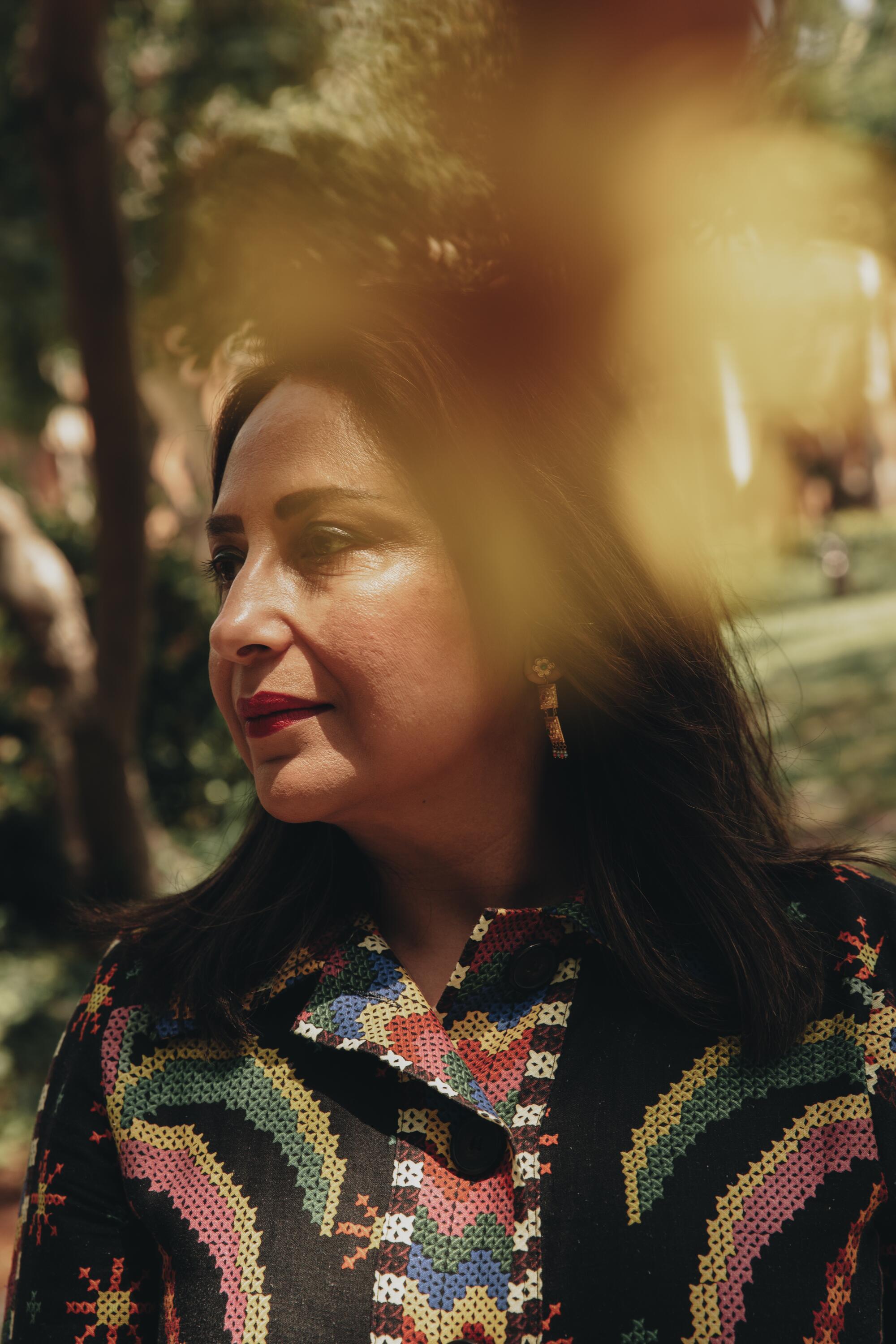
AR: It’s utter dehumanization. It’s so Orwellian because the names just mean the opposite of what they are. The cleanup is actually a sweep. Project Roomkey is actually Project No Key. The tiny homes are tool sheds.
TH: Language is important. It’s important to put the issues where they are because it educates people into understanding these are not solutions. These are temporary. They’re doing it because the public does not want to see poor people.
AR: Let’s end on an upbeat note. In the work you’ve done with J-Town Action & Solidarity, with Ktown for All, with the Echo Park Lake protests, you’ve noted the importance of the community solidarity that can be built. It seems to me that these are intergenerational, multiracial, housed/unhoused forms of community building.
TH: I think it’s a prescient point. But I also want to add something: One of the threads of all the movements that happened from the past was not just community but art. Without art and without youthful energy, the movements tend to flicker or die off. One of the things that I like about what we do at J-Town now is we give an open mic for people to speak. We had rap last week; I’ve said my poems there. I’ve done memorials. We need creative releases to be able to keep the movement going, the spirits up, the morale up and to hope for a better day.
The Flag is deemed a hazardous symbol when it exhibits characteristics such as the attack on women’s reproductive rights, empty patriotism and nationalism.
AR: Art is so important. L.A. County Department of Public Health just issued a report that shows the extraordinary increase in unhoused deaths during the pandemic. When you’ve done the memorials, most recently “Can You See Me,” it is obviously about making visible unhoused deaths. But it’s also clear that you have choreographed and curated a certain remembrance. There’s poetry, there’s spoken word, there’s music, there’s art. There’s an abundance of flowers. Tell us a little bit about how art also helps us remember and think about the future.
TH: We must embrace our circle of life. Unhoused people are not mourned, are not honored, are not remembered in the same respectable way as celebrities are at the end of the year. We don’t have that space. If I was to leave this planet tomorrow, I can take solace knowing that [“Can You See Me?”] is one of the enduring legacies that I know has done a lot of positive change. Next year, it’s going to be even better or bigger, to show the world that we won’t die, we won’t hide in dark corners anymore.
Theo Henderson is an unhoused Angeleno who is the creator of “We the Unhoused,” a podcast whose mission is “to provide accurate news coverage for the unhoused community about the unhoused community.” “We the Unhoused” tackles issues such as police brutality, NIMBY harassment, housing policy, health struggles and trauma-informed care. Henderson’s podcast and advocacy work have been featured in BBC News, CNN, Spectrum News, the Los Angeles Times, Slate and Vice News. Henderson is a distinguished activist-in-residence at UCLA, where he engages students and faculty through workshops and collaborations that debunk the anti-unhoused sentiment that permeates the world.
Ananya Roy is a professor of urban planning, social welfare and geography and the Meyer and Renee Luskin Chair in Inequality and Democracy at UCLA. She is founding director of the UCLA Luskin Institute on Inequality and Democracy, which advances scholarship concerned with displacement and dispossession in Los Angeles and elsewhere in the world. Her current research is concerned with “racial banishment,” the expulsion of working-class communities of color from cities through racialized policing and other forms of state-organized violence.
More stories from Image
